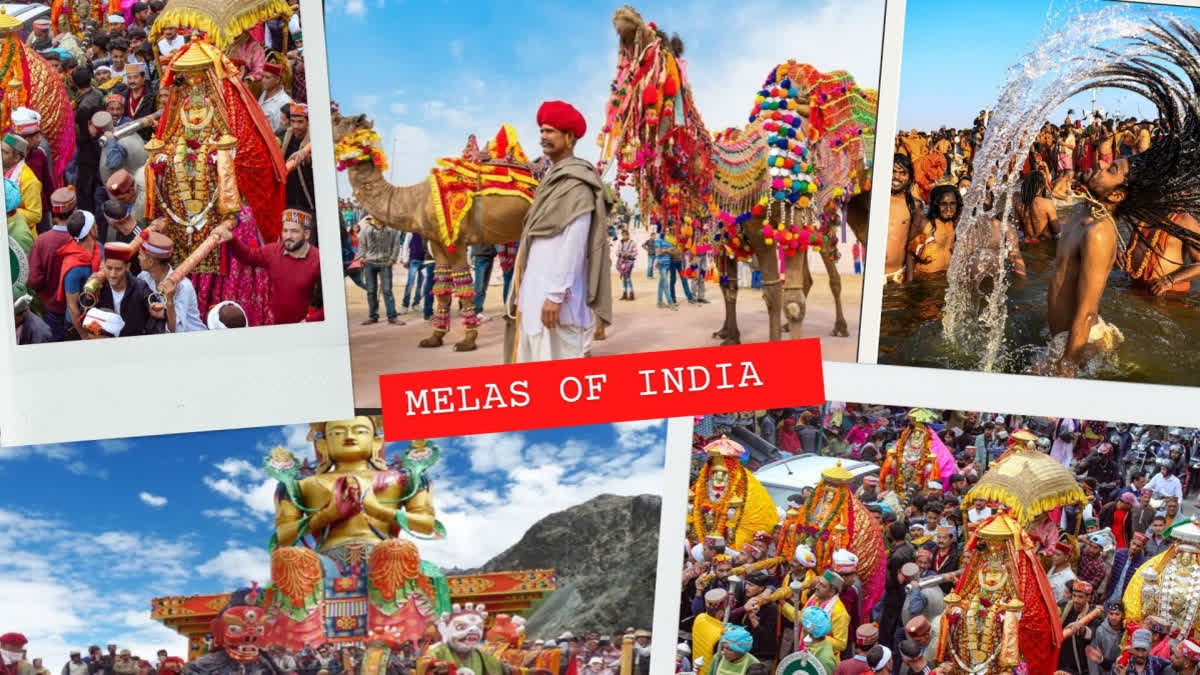India is a land where time seems to move to the rhythm of devotion and celebration. Among its countless festivals, melas hold a special place. For centuries, these massive fairs have been platforms for spiritual fulfillment, artistic expression, and economic exchange. Each annual gathering tells a story, a narrative woven into the collective consciousness of millions. With the upcoming Maha Kumbh Mela 2025 in Prayagraj set to captivate our imagination, let’s take a journey through some of India’s most cherished fairs.
1. Maha Kumbh Mela
When: Rotates between the four locations every 12 years. Maha Kumbh specifically occurs in Prayagraj every 144 years.
The Maha Kumbh Mela (which will grace Prayagraj in 2025) epitomizes India’s spiritual fervour. Pilgrims gather at the confluence of the Ganga, Yamuna, and Saraswati rivers, believing that a sacred dip washes away sins and leads to salvation. It’s a monumental moment where spirituality, mythology, and humanity converge in a sea of saffron robes, chanting, and devotion.
2. Pushkar Camel Fair
When: November (on Kartik Purnima)
At Pushkar in Rajasthan, the serene waters of the holy lake reflect not only the domes of temples but also the vibrant chaos of one of the world’s largest camel fairs. Villagers gather to trade livestock, and pilgrims throng to bathe in the sacred lake, said to have been created by Lord Brahma. Beyond its spiritual essence, this mela celebrates Rajasthan’s rustic charm, with folk performances, camel races and a kaleidoscope of colours.
3. Ardh Kumbh & Magh Mela
When: January-February annually (Magh month). Ardh Kumbh every 6 years.
The Magh Mela at Prayagraj is like a scaled-down version of the Maha Kumbh, but no less significant. Pilgrims set up camp for weeks to perform rituals and penance by the sacred rivers, making it a deeply introspective experience.
4. Hemis Festival
When: June-July (10th day of the Tibetan lunar month).
Set against the surreal backdrop of the Ladakh Himalayas, the Hemis Festival celebrates the birth of Guru Padmasambhava, the founder of Tibetan Buddhism. Monks in elaborate costumes put up mystical performances, and the air reverberates with the hum of ancient prayers. The festival bridges the physical and the metaphysical.
5. Kullu Dussehra
When: October (Dussehra week).
Unlike most Dussehra celebrations that dramatize the victory of good over evil, Kullu Dussehra focuses on communal worship. The deities from neighbouring villages are brought to the town in grand processions, creating an atmosphere of spiritual unity amidst Himachal’s tranquil valleys.
6. Sonepur Mela
When: November-December (Kartik Purnima).
Rooted in ancient lore, the Sonepur Mela’s origins lie in the mythological battle between Vishnu’s boar avatar and a crocodile. Today, the fair is a bustling convergence of faith and commerce. Alongside animal trading, the mela hosts cultural programmes, acrobatics, and bustling markets that encapsulate Bihar’s heritage.
7. Gangasagar Mela
When: January (Makar Sankranti).
At the southern tip of West Bengal (where the Ganga flows into the Bay of Bengal), pilgrims gather for the Gangasagar Mela. Often quieter than the Kumbh but equally significant, this event is steeped in mythology. It’s believed that Kapil Muni’s ashram here grants divine blessings, and taking a dip in the water purifies the soul.
8. Khajuraho Dance Festival
When: February-March.
Amidst the UNESCO-recognized Khajuraho temples, this festival in Madhya Pradesh is a tribute to India’s classical dance heritage. Performers from across the country bring Kathak, Bharatnatyam, and Odissi to life, blending ancient art with contemporary expression.
9. Baneshwar Fair
When: January-February (Magh Shukla Ekadashi).
The Baneshwar Fair (hosted by the Bhil tribe) honours Lord Shiva at the Baneshwar Mahadev Temple in Dungapur, Rajasthan. Beyond its religious significance, it’s a window into Rajasthan’s tribal culture. Folk dances, music, and traditional crafts transform the fairground into a lively cultural event.
Read more:



